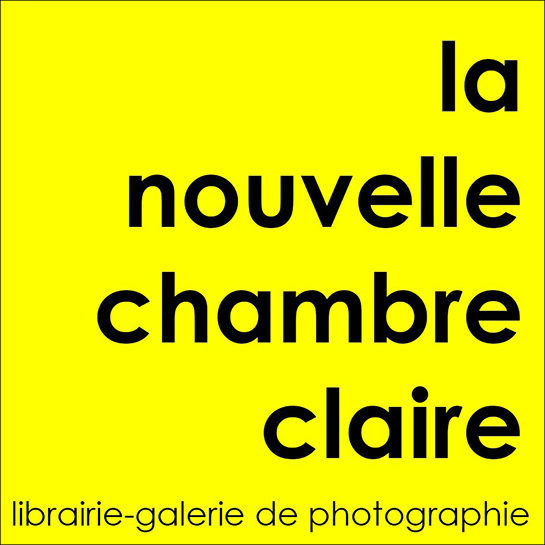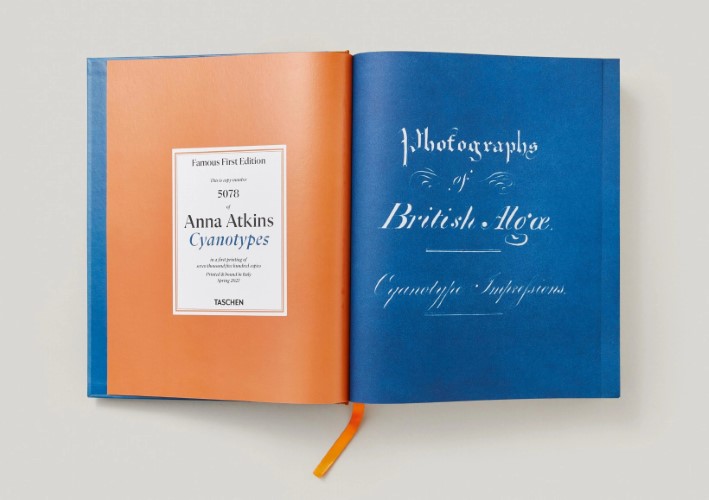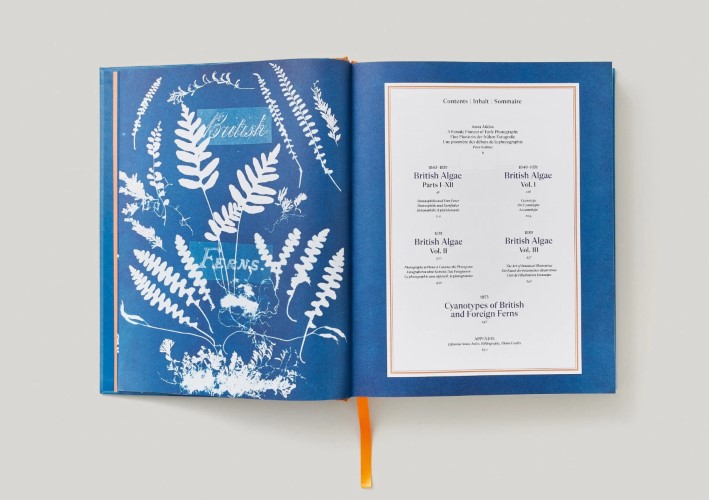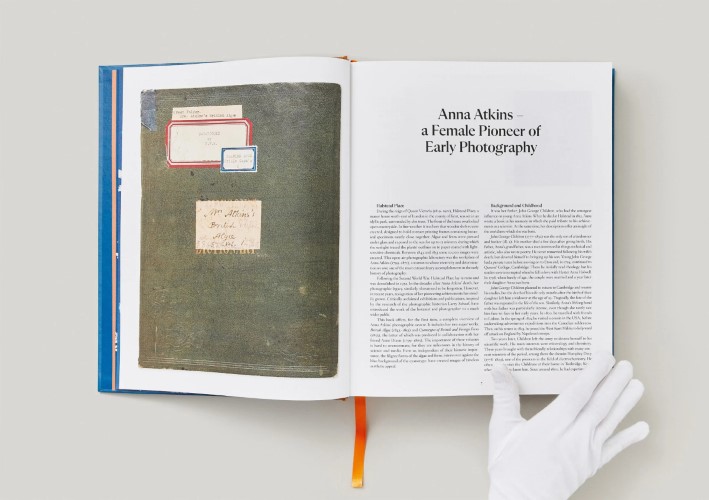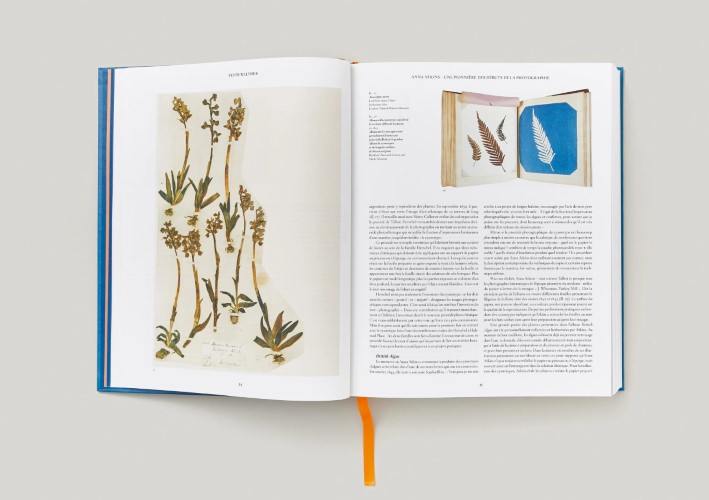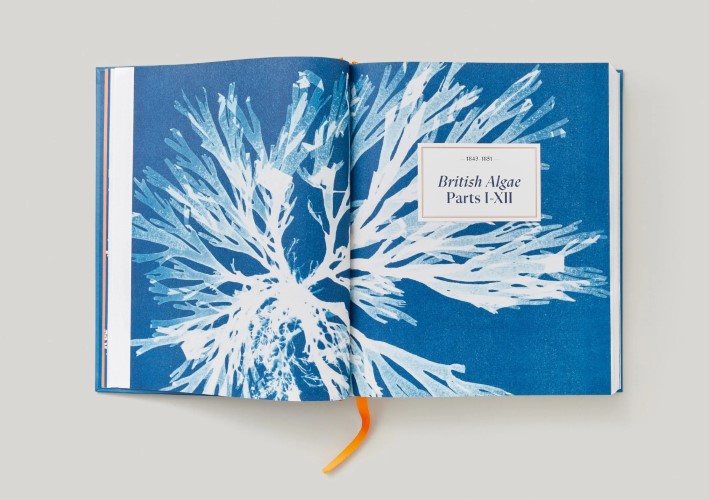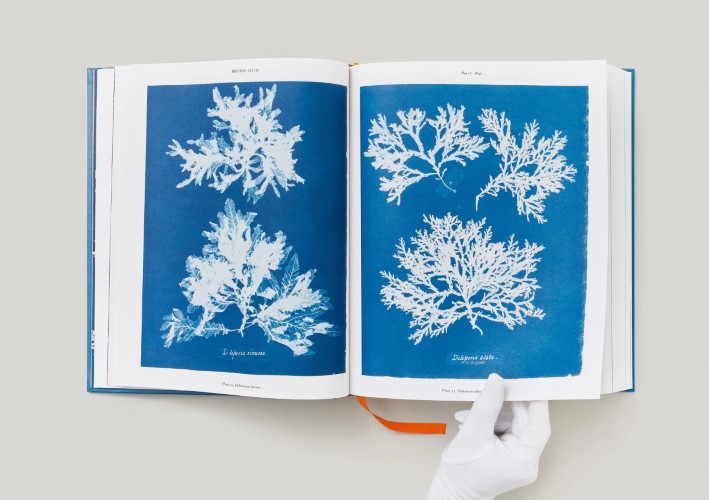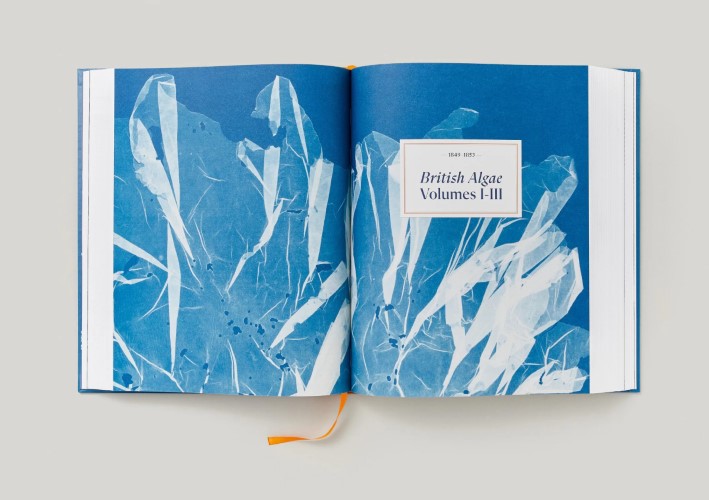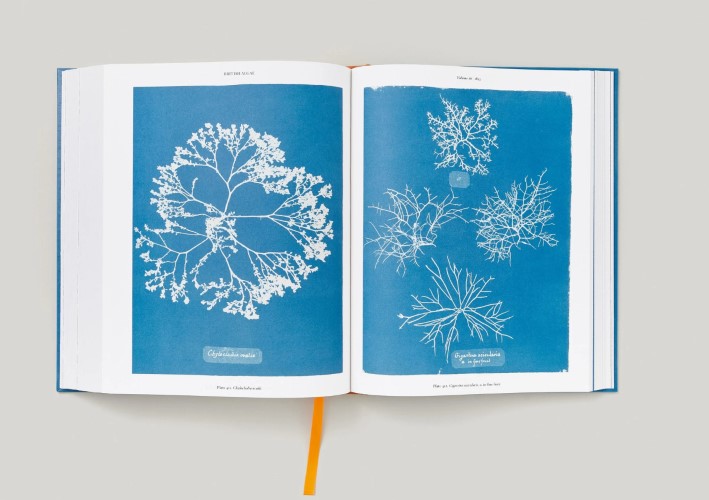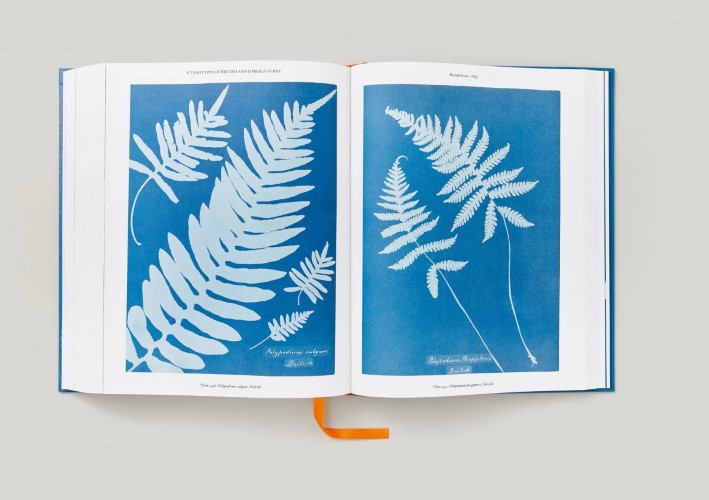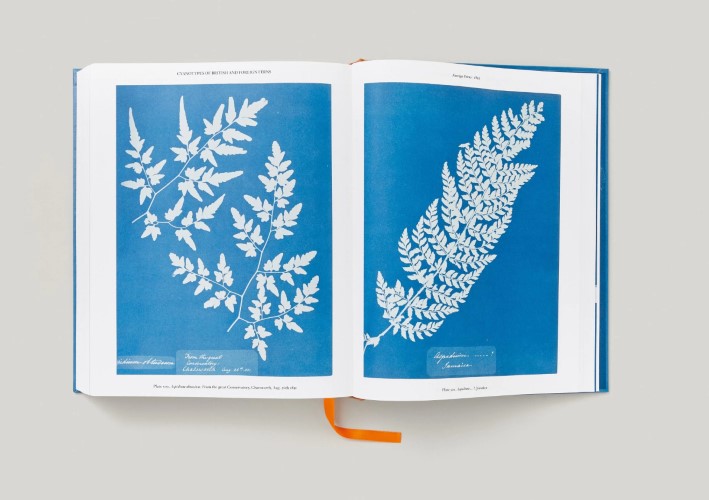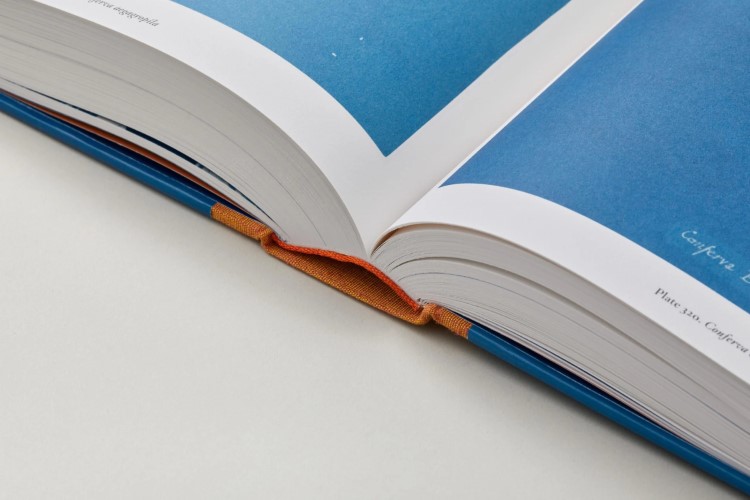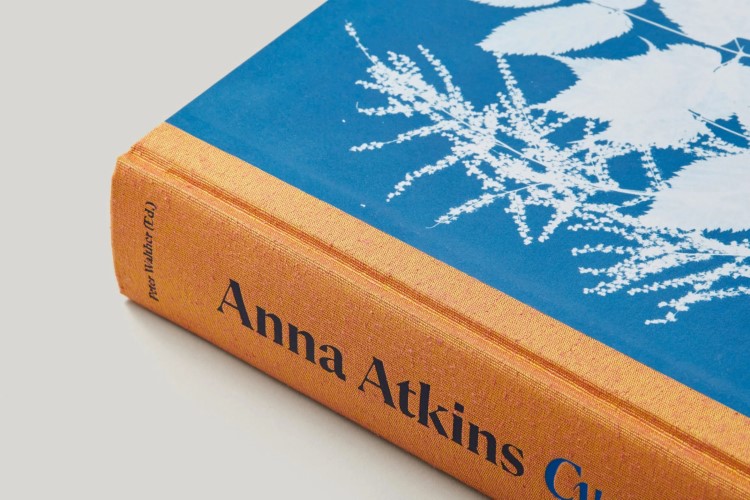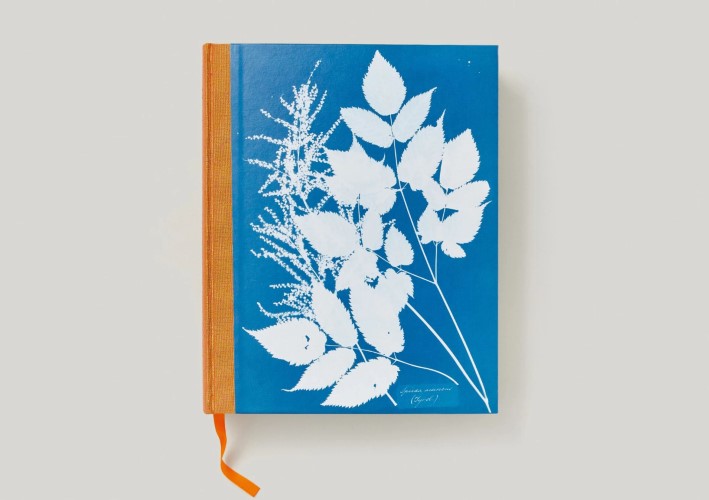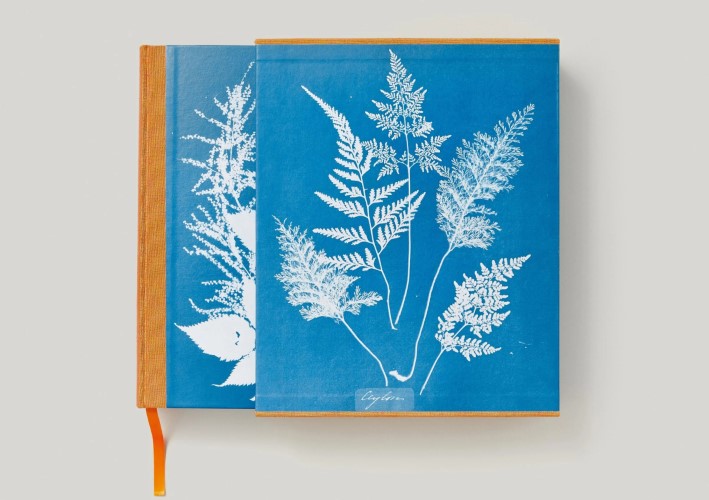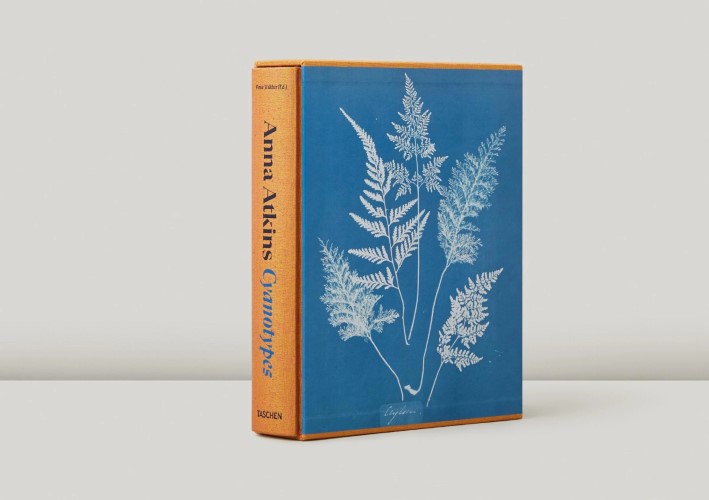Cyanotypes botaniques
La pionnière à la pointe de la photographie au 19e siècle
À l’aube de l’ère victorienne, dans son laboratoire à ciel ouvert de Halstead, dans le Kent, Anna Atkins se lança dans une expérimentation radicale pour créer une plus fidèle représentation des espèces botaniques grâce à une discipline artistique totalement nouvelle. Ses recueils d’inimitables photogrammes en cyanotype d’algues et de fougères sont les premiers ouvrages illustrés d’images photographiques jamais publiés. Aussi saisissants qu’éthérés, ils constituent une synthèse parfaite entre art et science.
Bien que la technique du cyanotype ait été découverte par son ami John Herschel, Atkins a été la première à en exploiter les applications pratiques, au service de son intérêt pour la botanique et la taxonomie, mais aussi pour son intrigant potentiel artistique. Le procédé consiste à placer un objet sur un papier sensibilisé exposé à la lumière directe du soleil pour révéler le pigment bleu cyan ou de Prusse qui forme l’arrière-plan si reconnaissable de ces œuvres.
Les herbiers d’Atkins British Algae (1843–1853) et Cyanotypes of British and Foreign Ferns (1853, conçu en collaboration avec son amie Anne Dixon), sont des ouvrages d’une remarquable rareté. Réimprimés ici dans leur intégralité pour la première fois, ils dévoilent sa maîtrise de multiples disciplines: si le cyanotype permet à Atkins de relever le défi de la représentation fidèle, les contours délicats des spécimens qui se détachent sur le fond bleu intense confèrent aux images un attrait esthétique intemporel.
Pour cette édition, qui s’appuie principalement sur les exemplaires conservés à la New York Public Library et au Musée J. Paul Getty, nous avons compilé des cyanotypes issus de différentes sources afin de réimprimer les œuvres majeures d’Atkins dans leur intégralité. Plus de 550 impressions de cyanotypes sont accompagnées d’une série d’essais introductifs de Peter Walther, qui replacent le travail d’Atkins dans son contexte scientifique et artistique et rend un hommage mérité à une pionnière peu connue ; sous la direction de Peter Walther.
Botanical Blueprints
The pioneer at the cutting edge of 19th-century photography
The first woman to use the fledgling medium of photography for scientific purposes, Anna Atkins captured the delicacy of algae and ferns in her albums: pioneering examples of photographic practice in their own right. For the first time, this edition reprints her works British Algae and Cyanotypes of British and Foreign Ferns in their entirety.
At the dawn of the Victorian era in her open-air laboratory in Halstead, Kent, Anna Atkins embarked on a radical experiment to document botanical species using a completely new artistic medium. The inimitable cyanotype photograms of algae and ferns she created were made into the first books to feature photographic images. Striking yet ethereal, these albums are a perfect synthesis of art and science.
Although the cyanotype technique was discovered by her friend John Herschel, Atkins was the first to realize both its practical purpose for own her interests in botany and taxonomy, and its intriguing artistic potential. The process, which involved fixing the object on sensitized paper and exposing it directly to sunlight, results in the Prussian blue pigment that forms the unmistakeable backdrop to these artworks.
Atkins’ albums British Algae (1843–1853) and Cyanotypes of British and Foreign Ferns (1853), the latter of which was produced with her friend Anne Dixon, are works of remarkable rarity. Reprinted here in their entirety for the first time, they reveal her mastery of multiple disciplines: While the cyanotype process allowed Atkins to meet the challenges of accurate representation, the delicate contours of the specimens, set above the intense blue background, has lent the images a timeless aesthetic appeal.
This edition, drawing extensively from the copies of the New York Public Library and J. Paul Getty Museum, has carefully compiled cyanotypes from several sources to reprint Atkins’ seminal works in full. Over 550 cyanotype impressions are accompanied by a series of introductory essays from Peter Walther, placing Atkins’ work in its scientific and art-historical contexts and paying rightful tribute to the groundbreaking contributions of a female pioneer ; edited by Peter Walther.
